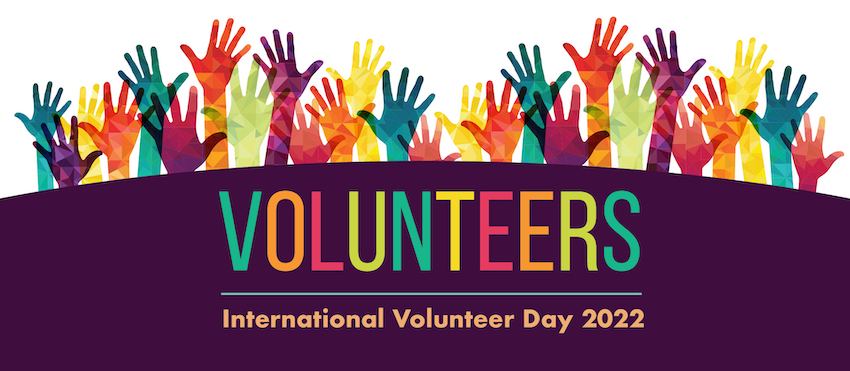Hanife Abakay
Nazish Abbas
Hamdy Abdalhady
Ahmed Abdelaziz
Mohamed Abdel-fattah
Mageed Abdelrahman
Walaa Abdelzaher
Zeelha Abdool
Bahiyah Abdullah
Hirokazu Abe
Melinda Abernethy
Tova Ablove
Tamer Abouelgreed
Bassel Abouzeid
Steve Abramowitch
Flora Abudushalamu
Toni Abulafi
Valentina Acevedo
Marian Acevedo-Alvarez
Bob Achila
Chahin Achtari
Mary Ackenbom
Shaun Adair
Emily Adams-Piper
Mayank Agarwal
Pranjal Agrawal
Vivian Aguilar
Rafael Aguirre
Thomas Aigmueller
Felix Aigner
Sayeba Akhter
Parveen Akhter Shamsunnahar
Sebnem Alanya Tosun
May Alarab
Alexandriah Alas
Ahmed Al-Badr
Stefan Albrich
Menachem Alcalay
Faiza Aldarmaki
James Alexander
Laila Alhubaishi
Okan Alkis
Kristina Allen-Brady
Maryam Almahruqi
Valeria Alonso
Marianna Alperin
Jonia Alshiek
Fatimah Alshiokh
Ali Alsulihem
Emre Altıntaş
Faisal Al-Turki
Pedro Alvarez
Silvia Alvarinho Junqueira
Costanza Alvear
Edilaine Alves
Patrícia Alves
Golafsoun Ameri
Baharak Amir
Cindy Amundsen
Mallika Anand
Maria Andrada Hamer
Vasanth Andrews
Sonia Angles
Danielle Antosh
Apostolos Apostolidis
George Araklitis
Tatiane Araujo
Diego Arévalo
Harpreet Arora
Afiba Arthur
Amanda Artsen
Angamuthu Arunkalaivanan
Berriandi Arwan
Charles Ascher-Walsh
Victoria Asfour
Stavros Athanasiou
Julius W. Atogebania
Serdar Aydin
Serpil Aydogmus
Hakan Aytan
Corey Babb
Fiona Bach
Samuel Badalian
Hawra Badri
Kaven Baessler
Aileen Baffo
JP Bagala
Panagiotis Bakas
Mary Baker
Mahmood Bakhtiyari
Sivakumar Balakrishnan
Federico Baldjian
Sunil Balgobin
Manuel Ballesteros Monrreal
Deniz Balsak
Felicia Balzano
Sebastiano Bandiera
Soma Bandyopadhyay
Marie Bangura
Nadia Baquerizo
Matthew Barber
Carlos Barberousse
Heather Barbier
Hayley Barnes
Rachel Barratt
Rachel Bartlett
Tulasa Basnet
Eduardo Bataller
Zhoobin Bateni
Achla Batra
Ali Batur
Yael Baumfeld
Tony Bazi
Tanan Bejrananda
Ana Carolina Sartorato Beleza
Noa Ben Ami
Masah Ben Zvi
Dante Benavides
Natalia Benavides
Stacey Bennis
Richard Bercik
Alexander Berger
Bary Berghmans
Stéphanie Bernard
Stephanie Bernard
Arnold Bernards
Lucia Berry
Cornelia Betschart
Leonardo Bezerra
Alka Bhide
Ana Maria Bianchi-Ferraro
Jennifer Bickhaus
Subhash Biswas
Donna Bliss
Kari Bø
Barbara Bodner-Adler
Markus Boeckle
Eric Bohoussou
Teresa Boitano
Jilly Bond
Liliana Bordeianou
Sydney Bormann
Maria Bortolini
Francesca Boscolo Sesillo
Simone Botelho
Sylvia Botros–Brey
Marie-Elisabeth Bouchard
Evgenia Bousouni
Shaniel Bowen
Brittni Boyd
Sarah Boyles
Catherine Bradley
Megan Bradley
Ingeborg Brækken
Caroline Brandon
Corlia Brandt
Sérgio Brasileiro Martins
Elvira Bratila
Rhiannon Bray
Sara Brenner
C. Emi Bretschneider
Stephanie Brito
Kendall Brouard
Bryan Brown
Heidi Brown
Linda Brubaker
Benjamin Brucker
Taylor Brueseke
Sarah Burgess
Linda Burkett
Lindsey Burnett
Lauren Burton
Brandy Butler
Charles Butrick
Elizabeth Byrne
Jenifer Byrnes
Delena-Mae Caagbay
Lauren Cadish
Lauren Caldwell
Ruth Cameron-Jeffs
Fernanda Campos
Bercina Candoso
Jiexin Cao
Cassandra Carberry
Cristiane Carboni
Linda Cardozo
Marcus Carey
Greta Carlin
Caitlin Carlton
Megan Carnes
Danielle Carr
Silvia Carramao
Alícia Carrera i Boix
Charelle Carter-Brooks
Rufus Cartwright
Viviana Casas-Puig
Fenne Casteleijn
Edgardo Castillo Pino
David Castro Diaz
Tatiana Catanzarite
Tatiana Catanzarite
Laura Cattani
Jessica Caudwell Hall
Mauro Cervigni
Britton Chahine
Symphorosa Chan
Yi Ling Chan
Kun-Min Chang
Olivia Chang
Emmanuel Chartier-Kastler
Bertha Chen
Gin-Den Shen
Grace Chen
Huey-Yi Chen
Jessie Chen
Jialan Chen
Luyun Chen
Wei Chen
Yufan Chen
Zhuoran Chen
Gautier Chene
Mei Chi Cheng
Pai Yu Cheng
Wenjin Cheng
Rachel Cheung
Catherine Chieng
Julio Chilewsky
Henry Chill
Batsuren Choijamts
Chris Chong
Woojin Chong
Christopher Chong Yew Luen
Queena Chou
Anupam Choudhary
Kyrstin Christensen
Karen Christman
Andreas Chrysostomou
Christine Chu
Sara Cichowski
Crystal Cisneros
Amanda Clark
Bayley Clarke
Becky Clarkson
Jorge Clavijo
Sage Claydon
Whitney Clearwater
Marie-Eve Clermont
Martha Coghlan
Seth Cohen
Gila Cohen-Milun
Andrej Cokan
Linda Collins
Sarah Collins
Samantha Condé Rocha
Kathleen Connell
Melissa Constantine
Anne-Lotte Coolen
Anne Coolen
Zebulun Cope
Steffi Cornwell
Marlene Corton
Michel Cosson
Madeline Coulter
Yanghee Courbron
Alexa Courtepatte
Caroline Cox
Meagan Cramer
Fernando Craviotto
Michael Creswell
Hendrik Cronje
Elizabeth Culleton-Quinn
Patrick Culligan
Geoffrey Cundiff
Gabriel Cura
Ana Sofia Da Silva
Patrick Dällenbach
Ciara Daly
Oliver Daly
Margot Damaser
Joseph Damoi
Jill Danford
Ganesh Dangal
Angela Dao
Ryan Darvish
Deepanjana Das
Abigail Davenport
Emily Rose Davidson
G. Willy Davila
Ashraf Dawood
Yair Daykan
Elise De
Monica de Heide
Peter de Jong
Laurent de Landsheere
Jan Willem de Leeuw
Sonia De Miguel Manso
Letícia Maria De Oliveira
Renaud de Tayrac
Raffaella De Vita
K. Lauren de Winter
Samantha DeAndrade
Albert Dedecker
Charlotte Delacroix
John DeLancey
Edward Delgado
Carlos Delroy
Timothy Demus
Katherine Dengler
Jan Deprest
Mohamed Derbel
Ashley Dermott
Rasika R. Deshpande
Bruno Deval
Erin Deverdis
Giovanni Di Favero
Chantal Diedrich
Alexis Dieter
Hans Peter Dietz
Irene Diez Itza
Alex Digesu
Shuqing Ding
Mucio Diniz
Simony do Nascimento
Amy Dobberfuhl
Fulya Dökmeci
Katelyn Donaldson
Josephine Doo
Harold Drutz
Anupreet Dua
Mary Duarte Thibault
Alexandra Dubinskaya
Alexandra Dubinskaya
Ulla Due
Omar Duenas-Garcia
Chantal Dumoulin
Tanaka Dune
Gena Dunivan
Constantin Durnea
Rahul Dutta
Seema Dutta
Sonia Dutta
Jan Dvorak
Denicia Dwarica
Lucy Dwyer
Peter Dwyer
Keisha Dyer
William Easton
Mario Echeverria
Karolynn Echols
Sarah Eckhardt
Autumn Edenfield
Allison Edwards
Erica Eggers
Brittany Egnot
Vladimir Egorov
Sabrina Einig
Marion Ek
Hazem El Ashmawi
Amr El Haraki
Hosam Elhalwagy
Dina El-Hamamsy
Eman Elkadry
Abubaker Elmardi
Sherif El-Nashar
Sally Ely
Ekene Enemchukwu
Sugarmaa Enkhtaivan
Elisabeth Erekson
Rika Erlinawati Sakinah
Montse Espuña Pons
M. Victoria Estanol
Janelle Evans
Dima Ezzedine
Kerac Falk
Alexandros Fanourgiakis
Bilal Farhan
Elisabeth Farrelly
Brigitte Fatton
Kasra Fazli zaman abadi
Suwen Feng
Dee Fenner
Andrew Feola
Rehan Feroz
Cecile Ferrando
Kimberly Ferrante
Angélica Ferrari
Javier Ferreiro
Tanaz Ferzandi
Ian Fields
Elyonara Figueiredo
Enrico Finazzi Agro
Thomas Fink
Carlos Finsterbusch
John Fischer
Steve Fisher
Fatima Fitz
Jocelyn Fitzgerald
Markus Fleisch
Tal Fligelman
Cathy Flood
Maria Florian-Rodriguez
Camilo Fonseca
Alexandre Fornari
Lori Forner
Caroline Foust Wright
Helena Frawley
Bob Freeman
Talia Friedman
Matteo Frigerio
Andrea Frudinger
Morgan Fullerton
Michelle Fynes
Boris Gabriel
Iwona Gabriel
Bertrand Gachon
Bertille Gaigbe-Togbe
Gabriel Ganyaglo
Alexandra Garcia
Bobby Garcia
Jorge Garcia
Hector Garde-Garcia
Alan Garely
Caroline Gargett
Adrian Gaspar
John Gebhart
Abel Gedefaw
Elizabeth Geller
Roxana Geoffrion
Matthew Gevelinger
Desna Ghatalia
Rahel Ghenbot
Ilias Giarenis
Dobie Giles
Prubjot Gill
Moshe Gillor
Shimon Ginath
David Ginsberg
Ayush Giri
Maria Giroux
Lauren Giugale
Stephanie Glass Clark
Karin Glavind
Lauren Gleich
Ohad Gluck
Judith Goh
Daniela Gold
Howard Goldman
Jose Miguel Gomez De Vincente
Alexandra Goodwin
Deepa Gopinath
Anuradha Gore
Merit Gorgy
Colin Goudelocke
Lizbeth Grado
Flora Graefe
Thomas Gray
Markus Grebe
Tamsin Greenwell
Angela Gregory
Jamie Greigo
Elfriede Greimel
Lauren Griebel
Bodgan Grigorescu
Themos Grigoriadis
Cara Grimes
Monica Grinbaum
Ehud Grinstein
Tamara Grisales
Anique Grob
Magdalena Grzybowska
Nathan Guerette
Marsha Guess
Marina Guirguis
Zeliha Guler
Funda Gungor Ugurlucan
Ankita Gupta
Ceren Gursen
Rodrigo Guzman
Anthony Gyang
Barbara Ha
Tanja Hüsch
Dominik Habeš
Hope Haefner
Bo Haixin
Surahman Hakim
Robert Hakvoort
Priyanka Halani
Gabriela Halder
Berna Haliloglu Peker
Sara Hamade
Jessica Hammett
Haitham Hamoda
Stephanie Handler
Philip Hanno
Engelbert Hanzal
Oz Harmanli
Marie-Andree Harvey
Yasmin Hasbini
Hashim Hashim
Daisy Hassani
Lynsey Hayward
Aparna Hegde
Suraj Hegde
A. Heisler
Christine Heisler
Joseph Henderson
Tatyanna Henderson
Kim Herewini
Natalia Hernandez
René Hernández Sánchez
Diego Hernandez-Aranda
John Heusinkveld
Lisa Hickman
Christina Hicks
Monique Hiersoux Vaughan
Rachel High
Nadia Hikary-Bhal
Sarah Hillery
Ashley Hilton
Katherine Hines
Samuel Hinkes
Diana Hoehn
James Hokanson
Tanya Hoke
Edwin Holt
Cristine Homsi Jorge Ferreira
Christopher Hong
Hannah Hong
Li Hong
Lukas Horcicka
Whitney Horner
Harry Horsley
Wagner Horst
Renato Hosoume
Sheng-Mou Hsiao
Hung-Hsiang Huang
Ting-Xuan Huang
Catherine Hudson
Markus Huebner
Hansjörg Huemer
R. Keith Huffaker
Rene Human-Baron
K. Hurt
Karen Ruben Husby
Martin Huser
Katherine E. Husk
Lucie Hympanova
Nada Ibrahim
Rami Ibrahim
Sara Ibrahim
Shaimaa Ibrahim
Jan Iersel
Carlene Igbedioh
Cheryl Iglesia
Flávia Ignacio Antonio
Paula Igualada-Martinez
Tolgay Tuyan Ilhan
Hasan Inal
Tomoe Inoue-Hirakawa
Patricia Insausti
Ilaha Isali
Khaled Ismail
Sharif Ismail
Anna-Maija Itkonen Freitas
Christopher Iwanoff
Shilpa Iyer
Matthew Izett
María J. Scotti
Araba Jackson
Bernard Jacquetin
Amita Jain
Sandhya Jain
Angela James
Roksana Janghorban
Christopher J. Jankowski
Frank Willem Jansen
Sierra Jansen
Kristine Janssen
Christopher Jayne
Stephen Jeffery
Eric Jelovsek
John Jelovsek
Peter Jeppson
Swati Jha
Xibei Jia
Yuanyuan Jia
Fatima Jibrel
Marie Jones
Jennifer Jose
Ivrose Joseph
Anna Christin Jossy
Rujin Ju
Caroline Juhl
Cassia Juliato
Baerbel Junginger
Amanda Kadesh
Bruce Kahn
Vladimir Kalis
Maherah Kamarudin
Ahmed Kamel
Hiroyo Kamio
Ixora Kamisan Atan
Padmasini Kandadai
Sarah Kanji
Gregg Kanter
Naheed Kapadia
Francisco Kaplan
Supuni Kapurubandara
Yasemin Karaaslan
Ebril Karaman
Emmanuel Karantanis
Paivi Karjalainen
Debjyoti Karmakar
Roopali Karmarkar
Barbara Karp
Debby Karp
Mickey Karram
Lisa Karstens
Esperanza Kauffmann Centeno
Rohna Kearney
Eskinder Kebede
Robert Kelley
Erin Kelly
Ellen Kelsey
Deidre Kenny
Kimberly Kenton
Emilee Khair
Nuha Khalfay
Fatima Khan
Rajvinder Khasriya
Vik Khullar
Aethele Khunda
Mark Kibschull
Jacqueline Kikuchi
Edward Kim
Laura Kim
Soo Rim Kim
Youngwu Kim
Shunaha Kim-Fine
Jenny King
Anna Kirby
Cassandra Kisby
Lindsay Kissane
Niels Klarskov
Wenche Klerkx
Kirsten Kluivers
Wisdom Klutse Azanu
Ivan Klyushnikov
Katrina Knight
Marianne Koch
Ervin Kocjancic
Apostolos Kolitsidakis
Yuko Komesu
Özge Kömürcü Karuserci
Qingyang Kong
Rachel Kopkin
Nicole Korbly
Damla Korkmaz Dayıcan
Casey Kowalik
Joseph Kowalski
Masayasu Koyama
Kazibe Koyuncu
Bence Kozma
Hannah Krause
Michal Krcmar
Martina Kreft
Jan Krhut
Priyanka Krishnaswamy
Jennifer Kruger
Annette Kuhn
Annette Kuhn
Deniz Kulaksiz
Mugdha Kulkarni
Tina Kunič
Atilla Kunt
Hann-Chorng Kuo
Eighty Mardiyan Kurniawati
Sabri Kurtay
Erica Lai
H. Henry Lai
Rainer Lange
Soren Lange
Maryse Larouche
Rosa Maria Laterza
Pallavi Latthe
Katharina Laus
George Lazarou
Douglas Leach
Edgar LeClaire
James Lee
Joe Lee
Ted Lee
Federico Legnani
Raquel Leirós-Rodríguez
Stephanie Leitch
Gabriel Leite
Bernadette Lemmon
Nucelio Lemos
Yvonne Leong
Juraj Letko
Eyal Levy
Gil Levy
Christina Lewicky Gaupp
Cindi Lewis
Cong Li
Lei Li
Xiaoqian Li
Ching-Chung Liang
Rui Liang
Amy Liao Askew
Ilias Liapis
Daniel Lieberman
Jason Shau Khng Lim
Frank Lin
Kuan-Han Lin
Kuan-Yin Lin
Tzu Hua Lin
Brian Linder
Fiona Lindo
Dotty Lindquist
Yi Ling Chan
Natasha Liou
Lioudmila Lipetskaia
Amy Liu
Tsia-Shu Lo
Andrea Lombisani
Farah Lone
Cheng Long
Zixi Loo
Anna Karoline Lopes Rocha
Valentina Lopez
María Fernanda Lorenzo Gomez
Kate Lough
Danilo Lourenco
Danny Lovatsis
Svetlana Lozo
Qudong Lu
Yongxian Lu
Lannah Lorraine Lua-Mailland
Vincent Lucente
Douglas Luchristt
Sebastian Ludwig
Marie Luebke
Emily Lukacz
David Lukanovi
Natalie Luke
Maria Teresa Luna
Thess Luna
Jiajia Luo
Rong Lv
Polina Lyatoshinsky
Lars Alling Møller
Barry Macmillan
Erin Maetzold
Sangeeta Mahajan
Charlotte Mahoney
Amr Mahran
Peter Majinge
Su-Wen Anne Mak
Shazia A. Malik
Andrea Maluenda
Saifuddin T. Mama
Mamta Mamik
Ruben Mamprin D'Andrea
Gurkiran Kaur Mann
Jane Manning
Jittima Manonai
Margarita Manresa
Valentín Manríquez Galán
Serge Marchand
Tara Marczak
Pamela Marfán
Harout Margossian
Samantha Margulies
Letícia Maria de Oliveira
Michael Marin
Giuseppe Marino
Alayne Markland
Leslie Marotta
Juliane Marschke
Juan Michelle Martin
Liam Martin
Pilar Martin
Rodrigo Martín
Carolina Martinez
Sandra Martinez Bustelo
Jaromir Masata
Catherine Matthews
Fleming Mattox
Keeth Mayakaduwage
Donna Mazloomdoost
Katherine McDonald
Peyton McElhone
Gabrielle McNary
Esther McNeill
Sarah McRobie
Nicole Meckes
Mokrane Medtjoh
Molly Meegan
Nadia Megahed
Vidushri Mehrotra
Mariana Meinberg
Melanie Meister
Joan Melendez-Munoz
Graciela Melgarejo
Colleen Mellen
Adil Mellouki
Alexandra Melnyk
Jerome Melon
Emilie M. Melvin
Shawn Menefee
Zelalem Mengistu
José Mera
Kate Meriwether
Amanda Merriman
Michele Meschia
Alfa Meutia
Isuzu Meyer
Raanan Meyer
Sylvain Meyer
Elizabeth Miazga
Alessio Miceli
Anna Mika
Tomi Mikkola
Themistoklis Mikos
Fred Milani
Katherine Miles
Jorge Milhem Haddad
Jay-James Miller
Kristin Miller
Vatche Minassian
Pawel Miotla
Kavita Mishra
Vineet Mishra
Ankur Mittal
Pamela Moalli
Fernandi Moegni
Michael Moen
Rayan Mohamed-Ahmed
Stefan Mohr
Gabriela Molina
Yadhira Monte Casillas
Marilene Monteiro
Rejano-Campo Montserrat
Kate Moore
Gil Mor
Edward Morcos
Roland Morley
Michelle Morrill
Abraham Morse
Lisan Morsinkhof
Haidy Morsy
Anke Mothes
Tsung Mou
Shoko Moue
Alex Mowat
Dakalo Muavha
Elizabeth Mueller
Maggie Mueller
Tyler Muffly
Shayanti Mukherjee
Narmin Mukhtarova
Nigisti Mulholland
Keila Muniz
Jaclyn Marie Muñoz
Ana Belén Muñoz Menéndez
Shivani Murarka
Ashley Murillo
Miles Murphy
Cynelle Murray Kunkle
Chandrashekar Murthy
Paul Muwanguzi
Deborah Myers
Erinn Myers
Indira Mysorekar
Geneviève Nadeau
Charles Nager
Irmina Nahon
Maki Nakata
Arjun Nambiar
G. Sarah Napoe
Cristina Naranjo-Ortiz
Rahel Nardos
Renato Natal Jorge
Sara Nausheen
Hedwig Neels
Menahem Neuman
Patricia Neumann
Joan Neuner
Sacha Newman
Keng (KJ) NG
Roy Ng
Hoa Nguyen
Stan Ngwaru
Gemma Nightingale
Payam Nikpoor
Cara Ninivaggio
Victor Nitti
Karen Noblett
Jimmy Nomura
Yukiko Nomura
Gina Northington
Norbert Nosal
Giuditta Novaretti
Natlia Novikova
Atieh Novin
Alexandra Nutaitis
Ugochi (Gochi) Nwulu
Ingrid Nygaard
Maria Nyhus
Amy O'Boyle
Molly O'Brien
John Occhino
Carolina Ochoa
Helen E. O'Connell
Florence Ofori-Agyeman
Yoshiyuki Okada
Miriam O'Kane
Adanna Okeahialam
Emerson Oliveira
Luiz Gustavo Oliveira Brito
Amanda O'Meara
Barry O'Reilly
Francisco Orejuela
David Orlicky
Marcus Ortega
Carmen Ortiz Roque
Michele O'Shea
Analia Ourens
Tyler Overholt
Sissel Oversand
Lin Li Ow
Diego Paciel
Anna Padoa
Ann-Sophie Page
Manidip Pal
Laura Palmere
Ricardo Palmerola
Anna Pancheshnikov
Apurva Pancholy
Sougata Panda
Ivilina Pandeva
Deeksha Pandey
Kun Pang
Joseph Panza
Nirmala Papalkar
Marie Paraiso
Amy Park
Jennifer Park
Candace Parker-Autry
Ana Livia G. Pascom
Ana Livia G. Pascom
Anita Patel
Mittal Patel
Radhika Patnam
Danielle Patterson
Alejandro Pattillo
Rachel Pauls
Lucila Pavan
Claudia Paya Ten
Sandy Pei-Ying Wu
Jon Pennycuff
Glaucia Pereira
Vasileios Pergialiotis
Antonette Pesebre
Thais Peterson
Paul Pettit
Benoit Peyronnet
Andrea Pezzella
Johann Pfeifer
Courtney Pfeuti
Tatiana Pfiffer Favero
Trang Pham
Yolanda Pham
Lizzie Philips
Christian Phillips
Ana Picoloto
Paola Pifarotti
Joseph Pincus
Fernanda Pipitone
Javier Pizarro-Berdichevsky
Andre Plair
Bracha L. Pollack
Alexander Popov
Oriol Porta
Clark Powell
Gregor Prša
Srikala Prasad
Mario Preti
Oliver Preyer
Jameca Price
Lisa Prodigalidad
Katie Propst
Gregor Prsa
Samantha Pulliam
Lieschen Quiroz
Katie Rabicki
Suneetha Rachaneni
Meera Ragavan
Philip Rahmanou
David Rahn
Mohammad Sajjad Rahnama'i
Natarajan Rajamaheswari
George Ralph
Preetha Ramachandra
Kalaivani Ramalingam
Rajeev Ramanah
Shasindran Ramanujam
Suran Ramphal
Adishi Ranjan
Angela Rantell
Charles Rardin
Masooma Raza
Lubna Razzak
Krista Reagan
Rosa Reategui
Emile Redwood
Mohan Regmi
Barbara Reichetzer
Caecilia Reiner
Becca Reisch
Felice Resnik
Francois Retief
Rosana Reyes
Stuart Reynolds
Labib Riachi
Cassio Riccetto
Monica Richardson
Holly Richter
Beri Ridgeway
Claus Riedl
Giovanni Rigby
Nancy Ringel
Andres Rodrigo Rivera Torres
Kasey Roberts
Dudley Robinson
Lacey Robinson
Elizabeth Robison
Jéssica Rodrigues
Tamara Roehling
Rebecca Rogers
Eyal Rom
Anna Romanova
Carlos Rondini
Eveline Roos
Jan Paul Roovers
Anna Rosamilia
Maia Rosenberg
Peter Rosenblatt
Heather Rosett
Peter Rosier
James Ross
Ghazaleh Rostaminia
Emilia Rotstein
Megan Routzong
Roziana Roziana
Esther Ruess
Zdenek Rusavy
Colin Russell
Gabriella Rustia
Emily Rutledge
Kelly Ryan
Alexandre Brandão Sé
Pushpa Sachdev
Taylor Y. Sadun
Dalia Saidan
Arunima Saini
Charbel Salamon
Daniel Salgado
Stefano Salvatore
Anne Sammarco
Bethany Sampson
Terri-Ann Samuel
Derrick Sanderson
Tatiana Sanses
Stephanie Sansone
Giulio Aniello Santoro
Thais Santos
Budi Iman Santoso
Jaime Sanz Pablos
Pau Sarrio-sanz
Marair Sartori
Jessica Sassani
Sanjana Satish
Polina Sawyer
Jeffrey Schachar
David Scheiner
René Schellart
Michele Schiano di Visconte
Megan Schimpf
Hjalmar Schiotz
Payton Schmidt
Steven Schraffordt Koops
Lucas Schreiner
Colby Schrum
Jane Schulz
Mitchell Schuster
Polina Schwarzman
Nadine Schwertner-Tiepelmann
Sarah Sears
Saya Segal
Shantha Kumari Sekaran
Ana Silvia Seki
Maura Seleme
Tatiana Semedo
Joanne Sentance
Maurizio Serati
Tamara Serdinšek
Tasha Serna-Gallegos
Dyhan Setia
Julian Shah
Kavita Jayesh Shah
Nemi Shah
Niranjan Shah
Mohamed Shahin
David Shaker
Rustam Shakhaliev
Eiman Shalabna
Duncan Shannon
Akash Sharma
Jai Sharma
Jonathan Shaw
Sami Shawer
Ka Lai Clara Shek
Beth Shelly
Elizabeth Shelly
Jonathan Shepherd
David Sheyn
Joe Shi
Julia Shinnick
Dmitriy Shkarupa
S. Abbas Shobeiri
John Short
Eric Shuffle
David Shveiky
Oksana Shynlova
Aditi Siddharth
Moiuri Siddique
Gazala Siddiqui
Nazema Siddiqui
Frederike Siemens
Lauren Siff
Yara Sifri
Allison Sih
Joseane Silva
Andrea Simi
Tomasso Simoncini
Natasha Simula
Khwairakpam Amitkumar Singh
Priyanka Singh
Ruchi Singh
Tanvir Singh
Diya Singhal
Sanjay Sinha
Rachel Sinkey
Dimos Sioutis
Anne-Marie Sirany
Ahmet Akin Sivaslioglu
Elizabeth Skinner
Ambereen Sleemi
Devon Smith
Hayley Smith
Hector Soderini
Andrew Sokol
Marco Soligo
Ellen Solomon
Jun Song
Emel Sonmezer
Olanrewaju Sorinola
Felice Sorrentino
Colby Souders
Vanessa Sousa
Sarin Soyemi
Sean Spector
Jordan Spencer
Anna Spivak
Sushma Srikrishna
Abhishek Sripad
Gemma St. Louis
Jocelyn Stairs
Edward Stanford
Anneke Steensma
Pieternel Steures
Kelley Stewart
Abby Stork
Oscar Storme
Kris Strohbehn
Andreas Studer
Charles Su
Selma Su
Gabriel Suarez
Leslee Subak
Marie Sullivan
Abdul Sultan
Rok Šumak
Vivian Sung
Grzegorz Surkont
Julie Suyama
Kamil Svabik
Jan Svihra
Paul Swart
Carolyn Swenson
Steven Swift
Raveen Syan
Alec Szlachta-McGinn
Shagufta Tahir
Visha Tailor
Annika Taithongchai
Peter Takacs
Justina Tam
Jose Tadeu Tamanini
Karl Tamussino
Yu Hwee Tan
Omer Tapisiz
Josephine Tapper
Erin Tappy
Nadja Taumberger
Nevine West
Lea Tene
Ranee Thakar
Karishma Thariani
Marrisa Therriault
Charles Thompson
Jennifer Thompson
Alyssa Tigner
Juan Tinajero
Yao Tingqiang
Miriam C. Toaff
Marc Toglia
Roni Tomashev
Philip Toozs-Hobson
Michele Torosis
Safwat Tosson
Ann Tran
Elisa Trowbridge
Gerda Trutnovsky
José Carlos Truzzi
Yi-Fang Tsai
Ibrahim Tsolakian
Paul K. Tulikangas
Amy Tung
Elena Tunitsky-Bitton
Ralf Tunn
Friyan Turel
Lindsay Turner
Enrique Ubertazzi
Andy Uduak
Wolfgang Umek
Darius Unwala
Maximiliano Uturburu
Eva Uustal
Marilene Vale de Castro Monteiro
Vaneesha Vallabh
Gabriel Vallejos
Kim van Delft
Jonathan van Dellen
Brittany van der Lugt
Huub van der Vaart
Lisa van der Vaart
Soné van der Walt
Hugo van Eijndhoven
Anique van Oudheusden
Femke van Zanten
Meera Vangal Vijaya Ragavan
Michael Vardy
Raul Varela
Darlene Vargas Maldonado
Bulut Varli
Ian Vasicka
Monique Vaughan
Maria Paula Vazquez
Joggem Veen
Victor Velasco
Agustina Vendramini
Uma Venkatesa
Sascha Vereeck
Kim Verhorstert
Pedro Vieira-Baptista
Monika Vij
Maarten Vink
Gisele Vissoci Marquini
Marcia Voigt
Astrid Vollebregt
Ingrid Volloyhaug
Emily von Bargen
Paul Wadensweiler
Bassem Wadie
Adrian Wagg
Clifford Wai
Shannon Wallace
Caroline Walsh
Jens-Erik Walter
Osanna Wan
Qian Wang
Rui Wang
Karen Ward
Kristina Warner
Erika Wasenda
Blair Washington
Arnaud Wattiez
Sara Wawrysiuk
Anne Weber
Nicole Weber
Qi Wei
Alison Weidner
Milena M. Weinstein
Adi Weintraub
Eva Welch
Glenn Werneburg
Adrienne Werth
Lauren Westbay
Joy Wheat
Thomas Wheeler
Susan Wherley
Emily L. Whitcomb
Amanda White
James Whiteside
Anis Widyasari
Ali Wileman
Helena Williams
Kathryn Williams
Marcella Willis-Gray
William Winkelman
Harvey Winkler
Shalini Wiseman
Anne Wiskind
Mariella Withagen
Kyle Wohlrab
Alan Wolfe
Dylan T. Wolff
Daniel Wong
Jennifer Wong
Kandice Wong
Vivien Wong
Jeffrey Woo
Carson Woodbury
Sue Woodward
Jennifer Wu
Pei-Chi Wu
Wen-Yih Wu
You (Maria) Wu
Michele Wyndaele
Raymond Xu
Ghanshyam Yadav
Manisha Yadav
Taro Yagi
Seda Yakit Yeşılyurt
Emily Yang
Jenn-Ming Yang
Cenk Yasa
Johnny Yi
Keren Yishai
Neriya Yohay
Chin Young
Rebecca Young
Mallory Youngstrom
Jiakun Yu
Angela Yuan
Josh Yune
Salomon Zebede
Malka Zeefe
Gregory Zemtsov
Chenxin Zhang
Di Zhang
Wenju Zhang
Zhibo Zhang
Man Zhao
Xiaofeng Zhao
Zi Ying Zhao
Lan (Julie) Zhu
Yiliang Zhu
Ariel Zilberlicht
Jacqueline Zillioux
Carl Zimmerman
Dani Zoorob
Jianwei Zuo
Stephanie Zuo
Halina Zyczynski








